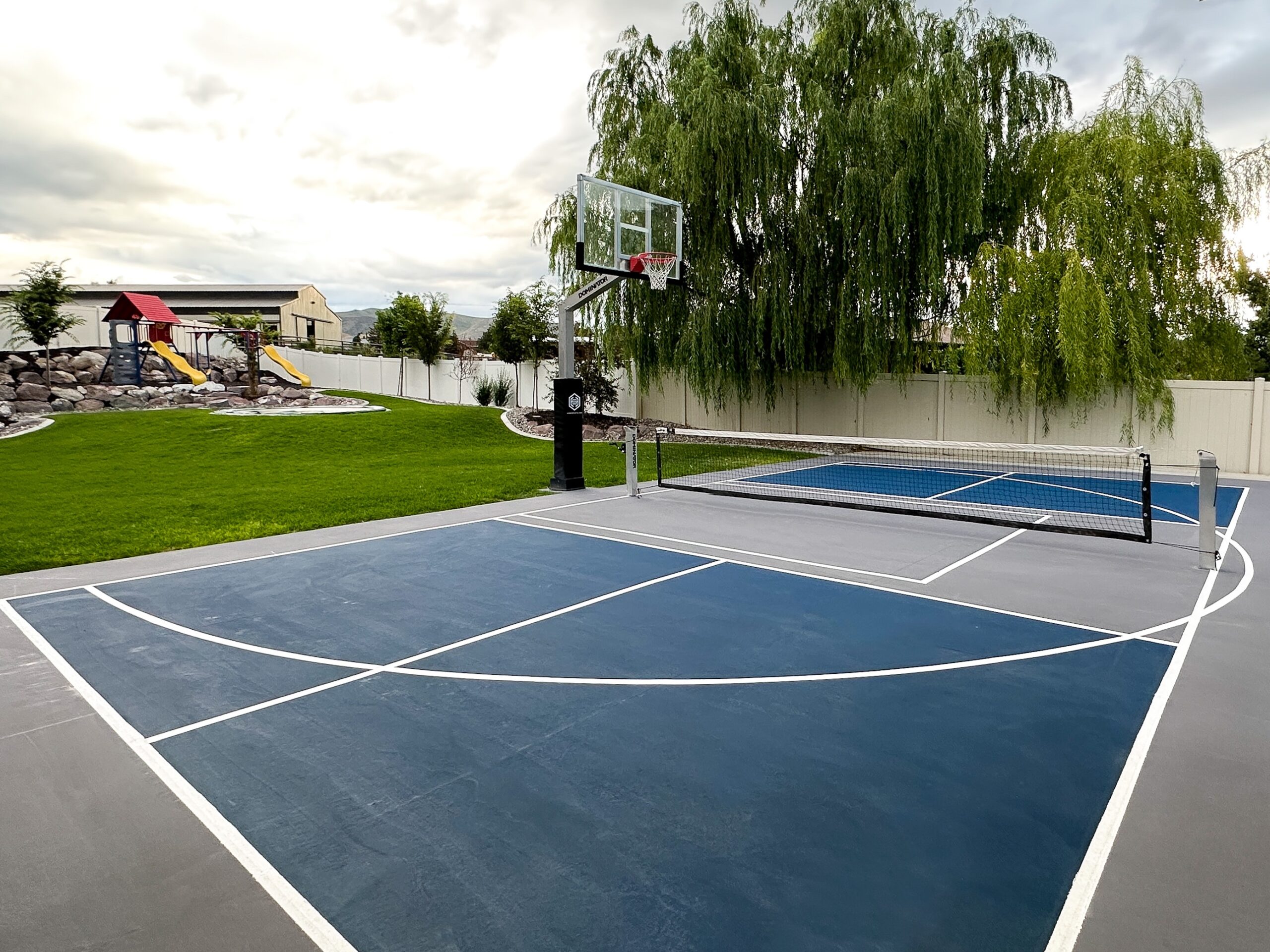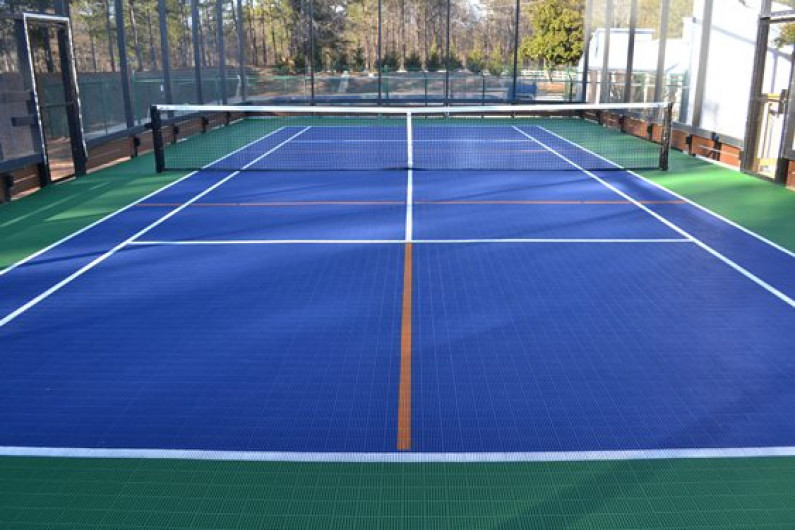How Local Regulations Impact Your Pickleball Court Construction Plans
Boost Resident Involvement With Community-Driven Pickleball Court Projects
The emergence of community-driven pickleball court jobs provides an one-of-a-kind chance to foster regional engagement and reinforce area ties. By actively entailing residents in the planning and implementation stages, such campaigns not just create recreational areas but additionally promote a common sense of possession. Recognizing the actions to initiate these jobs, consisting of reliable stakeholder interaction and resource allocation, is important. The real inquiry stays: how can these grassroots efforts be strategically carried out to guarantee sustainability and inclusivity in diverse communities? Checking out effective case research studies might give the insights required to answer this crucial problem.
Significance of Community Involvement
Neighborhood interaction is a critical element in the successful development of pickleball court jobs, as it promotes a feeling of ownership and collective duty amongst locals. When community participants are proactively associated with the preparation and implementation stages, they are more probable to support for the job's long-term success. Involving stakeholders such as local players, family members, and recreational groups makes certain that the centers satisfy the varied requirements and choices of the area.
In addition, neighborhood engagement grows an encouraging environment where homeowners really feel empowered to add their ideas and resources. Pickleball court construction. This collaborative technique can result in ingenious services that boost the layout and functionality of the courts, making them much more enticing to a wider target market. Furthermore, including citizens in decision-making processes can enhance social connections, advertising inclusivity and unity within the neighborhood
The presence of area assistance for a pickleball job can likewise play a critical function in securing funding and approval from regional authorities. By demonstrating a common commitment to recreational advancement, neighborhoods can effectively support for sources and policy adjustments that favor the facility of pickleball courts, ultimately improving the regional society and recreational landscape.
Actions to Start a Job
Initiating a pickleball court job calls for a systematic strategy that improves the foundation of area involvement established in previous discussions. The very first step is to construct a job board consisting of local stakeholders, lovers, and representatives from appropriate organizations. This diverse group guarantees that multiple point of views are thought about.
Next, perform a demands analysis within the area. Surveys, emphasis teams, and public meetings can be effective in assessing interest and event input on prospective court areas, wanted amenities, and scheduling preferences. Following this, establish a job strategy detailing objectives, responsibilities, and timelines.
When the plan is in place, engage with local authorities to understand zoning regulations and any type of required licenses. Communicating transparently with the community throughout this process is essential, as it fosters count on and encourages further engagement.
In addition, arranging neighborhood events can help maintain energy and interest. These events can work as systems for more discussion and help to strengthen area connections. Finally, file every action taken and keep in-depth records, as this will certainly be valuable for future stages of the job, including funding and source procurement.
Funding and Resources Available
Safeguarding financing and resources for a pickleball court job is typically a vital action that can figure out the project's expediency and success. Numerous avenues exist for getting monetary assistance, ranging from public financing to personal sponsorships. Neighborhood government gives, typically aimed at advertising community health and wellness and recreation, can give substantial economic backing for such efforts.
In addition to government sources, nonprofit companies and structures frequently use grants particularly for sporting activities and community advancement tasks. Engaging regional organizations as sponsors can likewise be a rewarding technique; lots of firms are eager to spend in area initiatives that improve their business social duty profile.
Crowdfunding platforms have actually arised as a sensible alternative for grassroots fundraising, enabling community members to contribute resource directly to the project. This method not only raises funds but likewise promotes a sense of ownership among participants.
Design and Planning Considerations
Effective layout and preparation are basic parts of any type of effective pickleball court task adhering to the procurement of financing and sources. A detailed analysis of the recommended place is necessary; this includes evaluating ease of access, distance to existing community amenities, and the possibility for presence and interaction.
The layout of the court must follow main size specifications while considering the surrounding atmosphere. Incorporating attributes such as seats, shade structures, and ideal illumination can considerably enhance gamer experience and spectator satisfaction. Products selected for the court surface area must prioritize durability and safety and security, with choices like acrylic or asphalt offering optimal efficiency.
Involving area members in the design procedure fosters a feeling of ownership and makes certain that the facility meets regional needs - Pickleball court construction. This can be attained through public appointments and surveys, permitting stakeholders to express their choices and issues
Sustainability needs to likewise be a top priority; integrating eco-friendly products and techniques can contribute to lasting practicality. Creating a maintenance strategy to ensure the court stays in exceptional problem will support continuous area engagement and involvement in pickleball tasks.

Success Stories and Instance Researches
Highlighting the transformative effect of community-driven campaigns, numerous success stories highlight how joint efforts have actually caused the growth of lively pickleball courts throughout different areas. One notable instance is the initiative in a small community in Florida, where locals grouped together to transform an underutilized tennis court into a committed pickleball facility. Via fundraising events and collaborations with local organizations, the community elevated sufficient funds to set up brand-new internet, resurfacing, and lines, inevitably fostering a vibrant center for regional gamers.
Similarly, in a suburb of California, a grassroots motion arised to create pickleball my site courts in a regional park. The task not only involved volunteers for building yet also included workshops to involve area members in the sport. Because of this, the courts became a centerpiece for social communication and health and fitness, attracting players of every ages.
These case research studies exhibit just how community-driven projects can enhance regional interaction, advertise exercise, and strengthen social bonds. By leveraging collective resources and interest, neighborhoods can efficiently develop and maintain pickleball facilities that serve diverse populations and foster a sense Visit Website of belonging.

Conclusion
By focusing on stakeholder involvement throughout the planning and application stages, these campaigns can effectively address diverse neighborhood requirements. Inevitably, such initiatives add to the transformation of public spaces into dynamic centers of physical fitness and social interaction, enhancing area connections.
The appearance of community-driven pickleball court projects presents an unique opportunity to foster local engagement and strengthen community ties.Community engagement is an important aspect in the successful development of pickleball court projects, as it fosters a sense of possession and cumulative duty amongst citizens. When neighborhood members are actively involved in the preparation and execution phases, they are much more likely to advocate for the task's lasting success.Starting a pickleball court job requires a systematic approach that constructs on the structure of neighborhood engagement developed in previous conversations. The job not only engaged volunteers for building but also consisted of workshops to engage community participants in the sport.